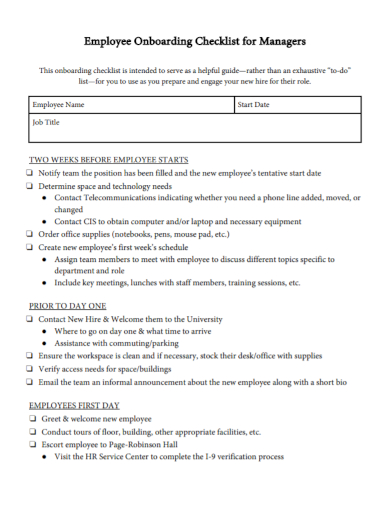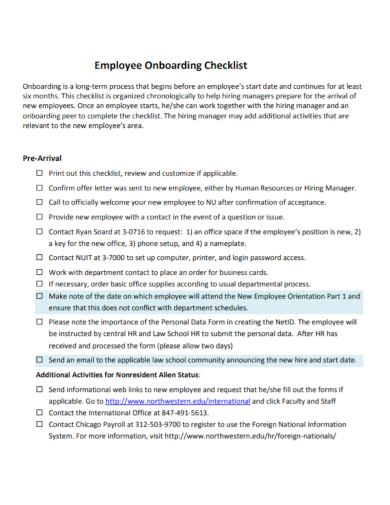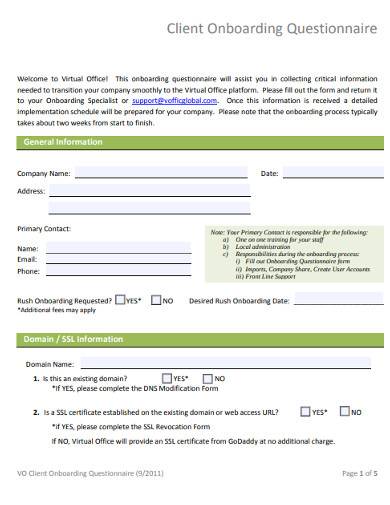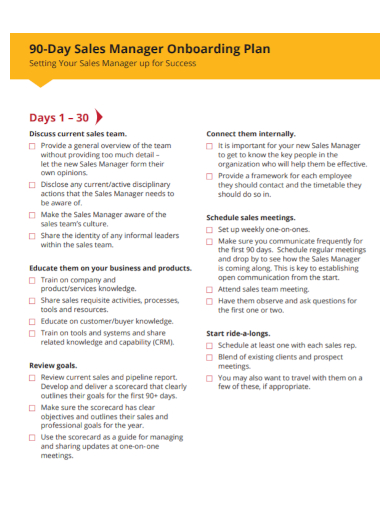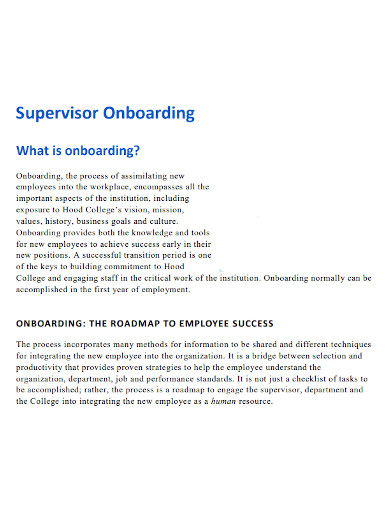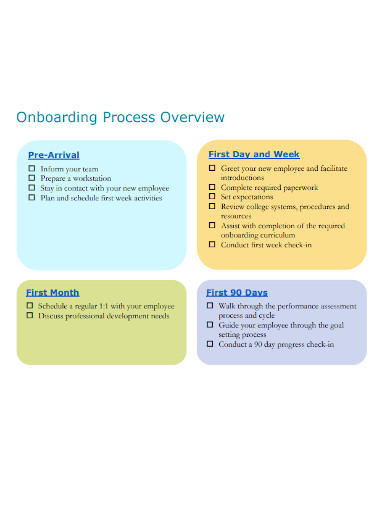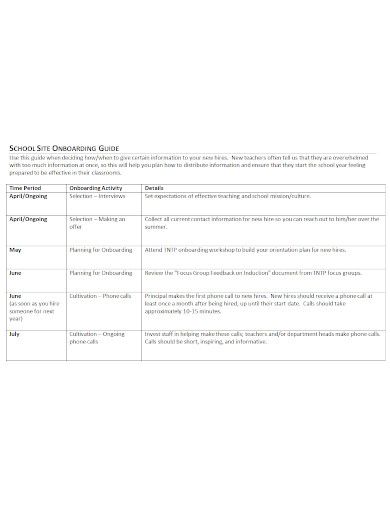Every new staff is onboarded, but the effectiveness of the onboarding matters. Too often, onboarding entails delivering a stack of documents to a new employee and having a supervisor or HR expert show them around the premises, conducting ad hoc introductions. When onboarding is implemented right, however, it builds the groundwork for both the individual and the employer’s long-term achievement. It can boost productivity, increase employee trust and commitment, and help employees succeed initially in their professions with the new company.
10+ Onboarding Samples
The process of integrating new employees into the organization is referred to as “onboarding.” It contains activities that help incoming employees to accomplish an initial new-hire orientation process and learn about the company’s structure, ethos, vision, mission, and principles. The onboarding process may last one or two days for certain firms, whereas it may last many months for others. Orientation and onboarding are frequently mistaken terms. While orientation is required for completing paperwork and other basic activities, onboarding is a 12-month process that involves administration and other employees.
1. Onboarding Schedule Template
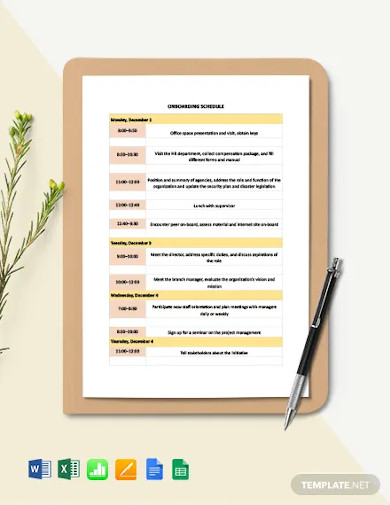
2. Free Onboarding Process Survey Template
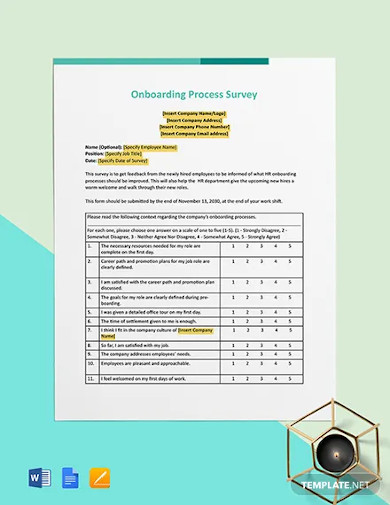
3. Restaurant Employee Onboarding Checklist Template
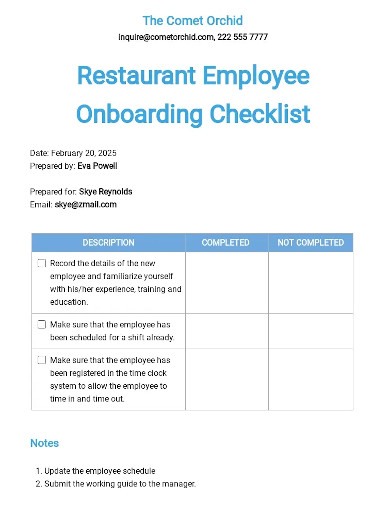
4. Managers Employee Onboarding Checklist
5. Employee Onboarding Checklist
6. Client Onboarding Questionnaire
7. Sales Manager Onboarding Plan
8. Onboarding Checklist
9. Supervisor Onboarding
10. Printable Onboarding
11. School Site Onboarding
Program Components
While an onboarding program can be designed in a variety of ways, key elements are essential to the process:
Preboarding
Some businesses prefer to start the onboarding process after the agreement has been reached but before the start date. Employers may seek to build initiatives to connect new employees to the company in these scenarios. The following are some examples:
- Organizing a tour of the facilities for the employee (this visit may include a house-hunting trip and community tour if relocation is involved).
- Information about the organization, such as benefits, the organizational chart, and corporate literature, is mailed or emailed to the employee.
- A care package is being sent to the recruit. Biscuits, coffee, a coffee mug with the corporate logo, or other logo apparel could be included in care packages.
- Assigning a new employee to a buddy who communicates with them before to their first day to address basic questions
Orientation
The purpose of new-hire orientation is to launch the new staff to the organization’s culture, vision, mission, and values, as well as to evaluate the employee handbook and emphasize major policies, carry out the necessary employee paperwork, review relevant administrative procedures, and provide training courses. This process might be overwhelming for a new employee, so it’s ideal to spread it out over a few days or a week if at all feasible.
Foundation building
An organization’s distinctive pillars of culture, mission, value enhancement, brand, and other essential underpinnings must be lived and represented constantly all throughout onboarding process. This will not be absorbed in the first week or month by new hires; it will take weeks or months to understand and implement. Determining the organization’s enduring principles and idealistic goals will aid in the construction of an onboarding program.
Mentoring and buddy systems
Many companies have a structured or informal mentoring or buddy system in place to help new employees get started. Mentors and pals might be chosen by the department manager or HR professional, or they can be volunteers. Recent hires are appointed to be friends in some firms because they have personal knowledge of what has benefitted them the most.
Reboarding
Reboarding pertains to updating employees on existing and new projects, having to adapt them to new team cultural contexts and relationships, and making them learn different perceptions for job success, whether they are returning from extended time off (e.g., a layoff, medical leave, or secondment) or experiencing an internal transfer or promotion. Engaging in reboarding can result in more productivity in a shorter period of time while also giving employees the opportunity to reintegrate socially and emotionally with their colleagues and work, resulting in higher engagement and career satisfaction.
[/ns_row]
FAQs
What is the onboarding process for a new employee?
Onboarding starts the minute a candidate receives a job offer and concludes when a new employee is fully absorbed and performs as expected, according to HR pros. Providing all new workers with a thorough, effective, and systematic introduction to their new company is a sensible investment, whether or not an organization delivers all of the onboarding aspects on the list.
How long does onboarding take?
There is no hard and fast rule on how long it should take to onboard a new employee. However, if you want to enhance employee engagement and decrease staff turnover, you must be comprehensive in this process. Many firms have a one-month or two-week onboarding procedure, which can leave new workers feeling overwhelmed by their new responsibilities and unable to connect with the rest of the company.
All employees, regardless of their level or status, will require some form of onboarding, as this is how an organization’s culture, regulations, and principles are communicated to all employees. The procedure, however, can be tweaked to match the demands of diverse workforce groups. Tailoring allows you to focus your onboarding campaign to achieve the EVP you promised throughout the recruitment process.
Related Posts
Sample Excuse Letter for School
Feature Writing Samples
FREE 10+ Security Guard Contract Samples in PDF | MS Word
FREE 10+ Option to Purchase Agreement Samples in MS Word | Apple Pages | PDF
FREE 26+ Curriculum Form Samples in MS Word | PDF
FREE 20+ Cleaning Service Proposal Samples in PDF | MS Word
FREE 29+ Sample Loan Application Form Templates in MS Word | PDF
FREE 10+ Event Venue Contract Samples in PDF | MS Word | Pages | Google Docs
FREE 10+ SBAR Samples in PDF | DOC
FREE 12+ Music Band Contract Templates in PDF | MS Word
FREE 10+ HVAC Maintenance Contract Samples in PDF | MS Word
FREE 10+ Social Media Marketing Contract Samples in MS Word | PDF
FREE 10+ Wholesale Assignment Contract Samples in PDF
FREE 18+ Financial Proposal Samples in PDF | MS Word | Google Docs | Pages
FREE 10+ Feasibility Study Samples in PDF

